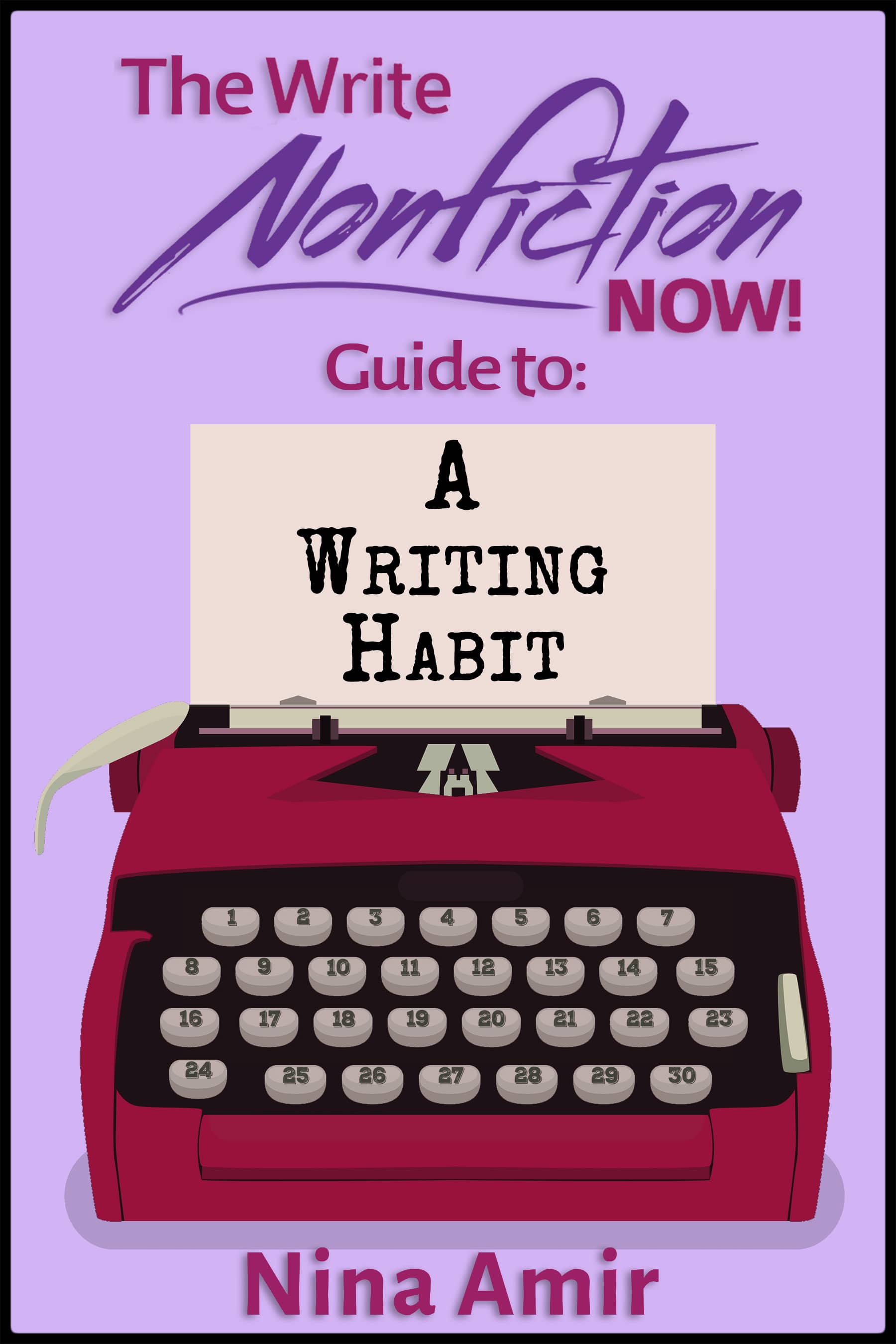Tuesday, March 12, 2024

There is a way to make changing or developing new writing habits easier. Change your environment. When you alter the context in which you write, developing new behaviors becomes simpler.
Your current environment supports your everyday writing habits. For example, if your desk sits in a dark corner of the house and is covered in bills, dirty tissues, and books, you won’t find it conducive to writing. In fact, every time you show up at your desk to write, you’ll feel the need to clean up first–and, since you don’t want to do that, you’ll walk away without ever turning on the computer. But suppose your laptop is positioned on the table next to your favorite chair, where the sun shines in and you can hear the birds sing. Then, when you sit down with your morning cup of coffee, you’ll feel inspired to pick up the laptop and begin writing.
Your environment helps you build and maintain supportive habits and enables you to break unwanted habits, too. For instance, if you want to stop eating sugar, you can create this habit by not stocking your pantry, refrigerator, or freezer with cookies, candy, or ice cream. You’ll actually find it hard to eat sweets in this context. You’d have to leave the house to find something sweet to eat.
The same is true of your writing habit. If you want to write consistently, you can create an environment that supports a daily writing habit. For instance, you can schedule daily writing time; add this writing block to your phone’s calendar so you receive a reminder. Create a space where all your writing materials or research are handy. Find a writing buddy or accountability partner, and reward yourself when you follow through and write daily, or punish yourself when you don’t.
Positive and Negative Cues Help Build or Break Writing Habits
 As you probably realize, you can design your environment with positive and negative cues that help you break or build habits. So, suppose you want to develop the habit of writing first thing in the morning. Then, you might put your laptop next to the coffee maker as a reminder. As soon as you have that cup in your hand, you pick up the computer, sit down at the kitchen table, and begin writing. Before you know it, you’ll have developed this desired habit.
As you probably realize, you can design your environment with positive and negative cues that help you break or build habits. So, suppose you want to develop the habit of writing first thing in the morning. Then, you might put your laptop next to the coffee maker as a reminder. As soon as you have that cup in your hand, you pick up the computer, sit down at the kitchen table, and begin writing. Before you know it, you’ll have developed this desired habit.
If you want to break a habit, like putting every other task or commitment before writing, you could commit to writing first thing in the morning. Wake up (and go to bed) an hour earlier in the morning, and, again, have your laptop situated by the coffee machine as a reminder. After you get your coffee, write for an hour before the day starts and you get distracted.
Choose Supportive Writing Environments
Pay close attention to the context within which you operate. Choose to spend time in environments that provide cues that help you develop a writing habit rather than develop or maintain bad habits.
In other words, don’t spend time writing in a coffee shop if all your friends congregate there. That’s just asking for a distraction from writing. Instead, spend time in a local library (where you cannot talk on the phone), at home in your office (with the door closed), or at a coffee shop far enough away from your stomping ground to avoid seeing anyone you know.
Or, if you want to write a book, don’t spend time in the living room with the television on. Instead, find a quiet room in your home that is designated as your office.
Different Contexts, Different Habits
Also, notice how you demonstrate different habits in different environments. You may habitually find other tasks to do when at home, but focus and write productively when at the local library. Or maybe you are in the habit of getting distracted by social media (on your phone or computer) when trying to write in your office, but if you bring your laptop onto an airplane, you write the entire flight.
 Consider also how your habits in specific contexts impact other habitual behaviors. For example, maybe you always turn on the television when you enter the living room. It’s no wonder, then, that you struggle to write when you use the living room as your office. You brain believes the living room is for television watching, not writing.
Consider also how your habits in specific contexts impact other habitual behaviors. For example, maybe you always turn on the television when you enter the living room. It’s no wonder, then, that you struggle to write when you use the living room as your office. You brain believes the living room is for television watching, not writing.
If your living room is where you want or need to write, create a different relationship with it by only using that space for writing. Habitually walk into the room, sit down, and begin writing (without the television on). Even better, put the television in the family room or an extra bedroom. These actions change your mind’s association with the living room, and, as a result, you will develop the habit of writing effectively in that space.
Change Your Environment to Change Your Habits
The concept is simple: change your environment, and you change your habits.
Recall a time when you went on vacation. You weren’t in your typical environment—your home or office—and your habits likely changed. Maybe you slept later and drank more alcohol than usual. Your habits were different.
Maybe you want to write a book but feel challenged to develop a writing habit. You try to write every day sitting at the kitchen table. However, your environment cues you to empty the dishwasher, do the laundry, feed the birds, walk the dog, and start cooking dinner instead. Your environment is not conducive to forming a writing habit.
But what if you go to a coffee shop every day to write (one where your friends don’t congregate)? Instead of seeing laundry baskets, empty bird feeders, the dog staring at you, and the dinner ingredients stacked on the counter, you see other people working at their computers. The first day you write in this environment, you knock out 3,000 words without effort. And after a week, it seems like second nature to sit down with your latte and write. You’ve formed a writing habit.
Avoid Mixed-Use Spaces
A space used for more than one activity results in confusing cues. That makes it hard to develop habits.
So, try to create a space for an individual activity—writing. Don’t try to write in a mixed-use space, like the kitchen; instead, only use your office, for instance. Then, focus on habits related to specific spaces. In other words, focus on writing in the space you designate as a writing space.
For example, develop the habit of writing in your office, exercising in your garage, watching TV in the living room, or eating in the dining room.
That means the kitchen is for cooking—not writing or eating. And you don’t read or surf the Internet in your office; you do that in the living room.
Create or Break Habits Quickly
Design your environment with habit formation in mind. And develop your writing habit in a context that helps, rather than hinders, your efforts at change.
As a result, you’ll find it much easier to create supportive writing habits and break unsupportive ones. Plus, you’ll never have to wait weeks or months to develop a writing habit—or any positive habit—again. Instead, you’ll create or break habits quickly.
Have you found it easier to develop a writing habit in a conducive environment? Tell me in a comment below. And please share this post with a friend or on social media.

Would you like to write and publish nonfiction work, like articles, blog posts, books, or reports…and become a successful (and productive) author? Join the Nonfiction Writers’ University. Get the basic education you need and author and personal growth coaching to help you succeed as a nonfiction writer.
Enjoy a 30-day trial membership for only $1. If you’ve felt the desire to get coached and be supported as you pursue authorship, this program is for you. Participate in monthly group Author Coaching sessions and gain access to an extensive archive of writing and publishing resources.
Photo courtesy of NejroN.
Nina Amir, the bestselling author of How to Blog a Book and The Author Training Manual, is a speaker, a blogger, and an author, book, blog-to-book, and high-performance coach. Known as the Inspiration to Creation Coach, she helps creative people combine their passion and purpose so they move from idea to inspired action and positively and meaningfully impact the world as writers, bloggers, authorpreneurs, and blogpreneurs. Some of Nina’s clients have sold 300,000+ copies of their books, landed deals with major publishing houses and created thriving businesses around their books. She is the founder of National Nonfiction Writing Month, National Book Blogging Month, and the Nonfiction Writers’ University. As a hybrid author she has published 19 books and had as many as four books on the Amazon Top 100 list at the same time. Her most recent book is called Creative Visualization for Writers, and tomorrow her 19th book will be released, The Write Nonfiction NOW! Guide to Creativity and Flow. Find all her books at booksbyninaamir.com or find out more about her at ninaamir.com.